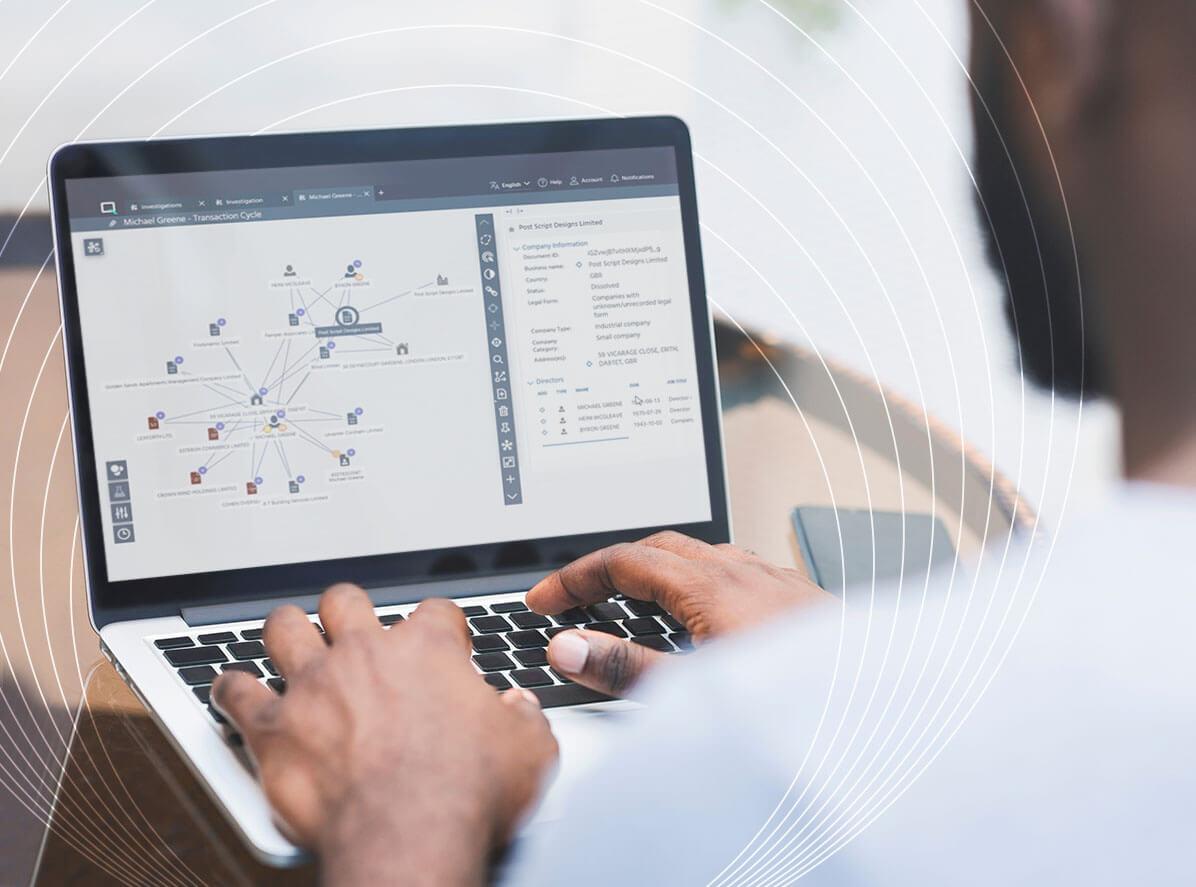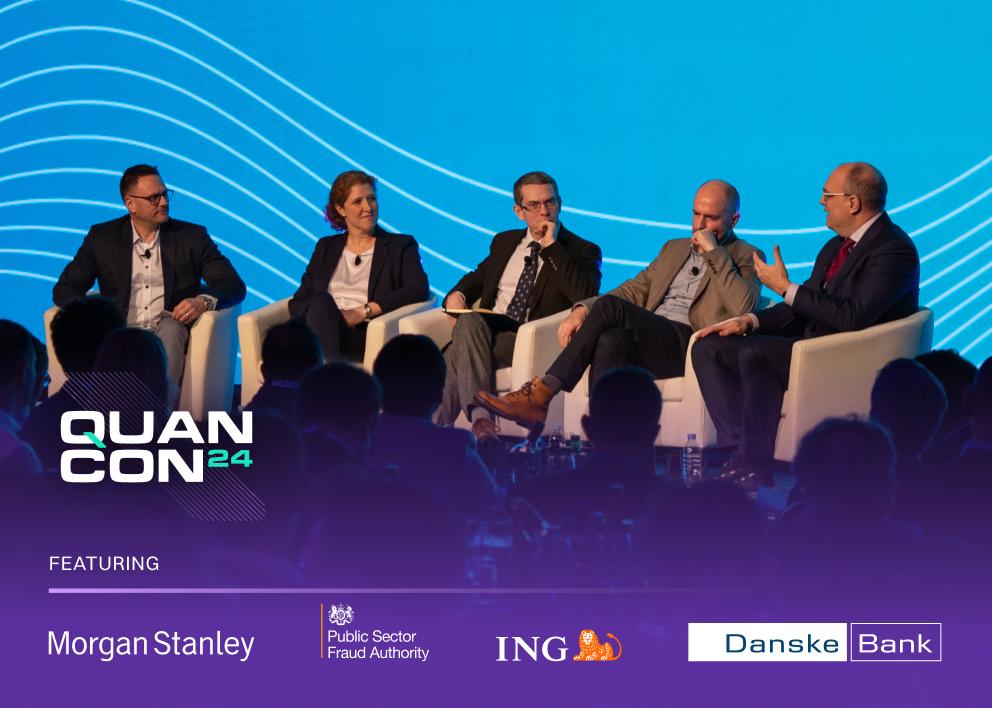Unter Geldwäsche versteht man den Vorgang, bei dem illegal erworbenes Geld als rechtmäßiges Einkommen ausgegeben wird. Es wird angenommen, dass irgendwo zwischen2 bis 5 % des weltweiten BIP werden jedes Jahr gewaschenDas entspricht einer Summe von über 1 Milliarde Dollar, die auf diese Weise bewegt werden könnte.
Denn diese weit verbreitete Praxis wurde eingeführt, um den Nachweis der Rechtmäßigkeit von Geldern zu erschweren,Anti-Geldwäsche (AML)Es wurden Techniken eingeführt, um die Ausbreitung illegaler Finanzgewinne in vielen verschiedenen Bereichen, einschließlich Finanzinstituten und Versicherungen, zu stoppen. Ziel dieser Ermittlungen ist es, die Ausbreitung illegaler Gelder zu stoppen und die Finanzsysteme weltweit zu stabilisieren.
Was ist eine AML Ermittlung?
Eine AML Ermittlung ist ein Prozess, auf den sich Unternehmen verlassen, um alle Aktivitäten im Zusammenhang mit Geldwäsche zu erkennen, zu verhindern und zu bekämpfen. Sie kann auch zur Unterbindung der Terrorismusfinanzierung sowie jeder anderen Form von kriminellen Finanzaktivitäten eingesetzt werden. Mit dem Ziel, die Stabilität und Integrität des gesamten Finanzsystems zu schützen, dienen AML Ermittlungen dazu, kriminelle Netzwerke, die Schlupflöcher ausnutzen wollen, direkt zu stoppen.
Eine Ermittlung wird in mehreren Phasen durchgeführt, wobei der Schwerpunkt darauf liegt, alles Verdächtige zu identifizieren, nach Ungereimtheiten in der Finanzberichterstattung zu suchen und zu versuchen, die Quelle illegaler Aktivitäten zu ermitteln. Indem statistische Analysen und Kundenaktivitäten zusammengeführt werden, zielt eine Ermittlung darauf ab, Geldwäsche zu identifizieren, aufzudecken, zu bekämpfen und schließlich zu verhindern.
 Klicken Sie hier, um das ganze Bild zu sehen.
Klicken Sie hier, um das ganze Bild zu sehen.
Was sind die Schritte in einem AML Ermittlungsverfahren?
Wie bereits erwähnt, umfasst eine AML-Ermittlung eine Reihe von Schritten. Jeder dieser Schritte dient dem übergeordneten Ziel, Geldwäsche aufzudecken oder zu verhindern, dass sie fortgesetzt wird oder überhaupt erst entsteht. Die wichtigsten Bestandteile einer erfolgreichen AML Ermittlung sind:
Initial alert.An AML investigation first begins when an alert is triggered on an account. This can occur as a result of an internal review, an automated monitoring system, or even someone noticing suspicious customer behavior on a given account.
Triage.At this stage, an internal analyst will scrutinize whether the red flag triggered by the alert needs to be pursued. If an alert is valid, the investigation process enters the next stage. If not, it will be dismissed and chalked up as a false positive.
Case creation.At this stage, a case is created from the alert, or series of alerts related to the same customer. The case is then assigned to an investigator, who in turn will review the reason that the alert was generated as well as severity and exposure of the potential risk.
Information gathering.Details about the customer should be collected or relied upon next. This data might already exist as part of customer due diligence (CDD), or, if additional information is required, via outside systems such as LexisNexis, credit bureaus, and even Google.
Transaction analysis.Next comes a detailed breakdown of all transactions made on the account. Investigators will look for anomalies, suspicious movements of money, patterns, and unusual behavior, and may even go as far as to carry out further research on the customer’s full financial footprint and history.
Source of funds check.If there’s cause for alarm, an investigator will track and assess the source of the money being moved and potentially laundered. At this point they will determine whether it comes from a legitimate source or not.
Suspicious activity reporting.If it’s determined that money laundering may have taken place on an account, a Suspicious Activity Report (SAR) will be filed with the relevant regulatory authorities. If these authorities rule that money laundering has taken place, then the account will be frozen.
Record keeping.It’s important to store and provide a detailed portfolio of documentations, findings, and actions that were carried out during the investigation. This helps others, such as managers or outside departments, during their own investigation, while also making it easier to monitor the same accounts and customers in the future if a similar alert is triggered.
Ongoing monitoring.If the investigation comes to a conclusion, the accounts in question still need to be monitored in order to prevent future crimes. This means assessing all transactions made by an account or the customer in question.
Intelligence-led Investigations
Reduce false positives. Automate and augment investigations and visualize hidden connections. Lower the cost of compliance with more confidence in your coverage.
AML Ermittlungsteam löst aus
Eine AML Ermittlung wird durch eine beliebige Anzahl von Warnungen oder roten Fahnen ausgelöst. Diese Vorkommnisse, die sich oft in verdächtigen Aktivitäten äußern, stellen einen Verstoß gegen die im AML-Compliance-Programm eines Unternehmens festgelegten Verfahrensgewohnheiten dar. Auslöser gibt es in vielen verschiedenen Formen, aber zu den üblichen Beispielen gehören Dinge wie:
Häufige Bargeldtransaktionen mit unregelmäßig hohen Beträgen
Komplexe und vielschichtige Transaktionen
Eine Reihe von schnellen und unerklärlichen Transaktionen
Abhebungen von einem Konto unmittelbar nach einer Einzahlung
Weigerung, die erforderlichen Unterlagen vorzulegen oder die regulatorischen Kontrollen zu erfüllen
Inkonsistente Transaktionen im Vergleich zum Profil und Hintergrund eines Kunden
Groß angelegte Transaktionen mit Hochrisikoländern
Interne Verweise, die auf merkwürdiges Verhalten hinweisen
Wenn einer dieser Auslöser bei einem Konto festgestellt wird, ist eine Ermittlung die klügste und sicherste nächste Verfahrensweise.
AML Ermittlung Use Cases
Nicht jeder Fall im Bereich AML wird gleich gehandhabt. Je nach Art und Schwere des Falles kann im Rahmen einer Ermittlung eine Reihe unterschiedlicher Techniken zum Einsatz kommen. Hier sind einige gängige Beispiele für verschiedene Use Cases:
Risikoorientiertes Targeting
Bei diesem proaktiven AML-Ansatz werden die Risikofaktoren für ein bestimmtes Konto oder Produkt bewertet, um zu verhindern, dass Geldwäsche Realität wird. Dabei werden verschiedene Aspekte geprüft, darunter der geografische Standort, die Art der Transaktionen, Informationen über den einzelnen Kontoinhaber und alle Kanäle, über die ein Produkt möglicherweise bewegt wird.
Kollaborative Intelligenz
Die Interkonnektivität zwischen verschiedenen Finanzinstituten und sogar über nationale Grenzen hinweg wird die AML-Bemühungen ebenfalls unterstützen. Die gemeinsame Nutzung von AML-Techniken und -Erkenntnissen sowie von Daten und einem Gesamtrahmen dient der Harmonisierung und Konzentration aller Ansätze bei einer Ermittlung.
Externe Strafverfolgung
Aufgrund des regulatorischen und rechtlichen Charakters der AML-Techniken arbeiten die Strafverfolgungsbehörden mit strengen Compliance-Programmen, um die Durchführung von Ermittlungen korrekt durchzusetzen. Wenn bei einer Ermittlung festgestellt wird, dass die Einschaltung der Strafverfolgungsbehörden erforderlich ist, arbeiten sie mit einem Finanzunternehmen zusammen, um das Problem zu lösen.
Regulatorische Leitlinien
Dies sind die Verfahren, an denen sich jeder orientieren sollte, der eine AML Ermittlung durchführt. Compliance-Programme stellen sicher, dass AML in jeder Phase vorschriftsmäßig durchgeführt wird, so dass gewährleistet ist, dass bei jedem Konto eine genaue und rechtmäßige Schlussfolgerung gezogen wird.
Prüfung der Kontrollen
Dieser auch als AML-Audit bezeichnete Ansatz prüft die Wirksamkeit der verschiedenen Verfahren zur Einhaltung der Vorschriften, die im Rahmen einer Ermittlung eingesetzt werden. Dazu gehören unter anderem interne Kontrollen, Due Diligence-Prozesse für Kunden und Systeme zur Überwachung von Transaktionen. Bei der Prüfung der Kontrollen wird beurteilt, ob eine AML Ermittlung, falls sie durchgeführt wird, in Übereinstimmung mit den regulatorischen Compliance Verfahren abläuft.
Herausforderungen bei AML-Ermittlungen
Wie bei jedem komplexen Finanzverfahren werden diejenigen, die eine AML Ermittlung durchführen, im Laufe des Prozesses auf Herausforderungen stoßen. Auch wenn diese den Abschluss einer Ermittlung erschweren, können sie umgangen werden. Im Folgenden finden Sie einige gängige AML-Herausforderungen und wie Sie diese bewältigen können:

Heterogene und komplexe Datenübernahme

Überwachung und Entscheidungsfindung in Echtzeit

Gemeinsame Nutzung von Daten und Zusammenarbeit unter Beachtung des Datenschutzes

Sich entwickelnde Compliance-Vorschriften
Bewährte Verfahren für AML-Fallmanagement
Um das AML-Fallmanagement von Anfang bis Ende so effizient wie möglich durchzuführen, sollte eine Reihe von Best-Practice-Techniken eingesetzt werden. Diese können je nach der genauen Art Ihres Falls unterschiedlich aussehen, dienen aber letztlich dazu, die Effizienz des Prozesses zu erhöhen und die gewünschten Ergebnisse zu erzielen:
Verschaffen Sie sich ein gründliches und detailliertes Wissen über alle Gesetze und Vorschriften in dem Land, in dem Sie tätig sind.
Verwendung eines proaktiven, risikobasierten Ansatzes für AML-Ermittlungen
Erfüllen Sie alle Anforderungen für AML-Compliance
Verlassen Sie sich auf KI und andere automatisierte AML-Software
Automatisieren Sie Datenintegration und -analyse
konsequente und fortlaufende Schulung für alle Mitarbeiter
Verwalten Sie alle Fälle an einem zentralen Ort, um Daten zu visualisieren
Regelmäßige Aktualisierung der Strategien und Verfahren
Führen Sie jährliche Audits durch, um Ihr System zu testen
Erstellung und Pflege detaillierter Unterlagen für jede einzelne AML-Ermittlung
Messung der Wirksamkeit Ihres AML-Fallmanagements
Um die Auswirkungen Ihrer AML Ermittlung zu verstehen, ist es wichtig, sie anhand relevanter Kennzahlen und KPIs zu bewerten. Auch wenn einige davon offensichtlich sind, gibt es Bewertungskennzahlen, die jemandem, der eine Ermittlung durchführt, vielleicht nicht sofort klar sind. Verwenden Sie die folgenden KPIs und Metriken, wenn sie für Ihren Fall relevant sind:
SAR disclosure rate
Damit wird die Anzahl der Verdachtsmeldungen erfasst, die an die Strafverfolgungs- und Aufsichtsbehörden weitergeleitet wurden. Diese Kennzahlen vermitteln ein klares Bild von der Anzahl der mit hohem Risiko behafteten und wahrscheinlichen Fälle von Geldwäsche und geben einen Überblick auf höchster Ebene darüber, wie gut die allgemeinen AML-Präventionsmaßnahmen funktionieren.
False-positive rate
Die Verfolgung der Anzahl der falsch-positiven Meldungen, die ein System als rote Fahnen auslöst, ist ebenfalls sehr wertvoll. Dies gibt einem Unternehmen die Möglichkeit, sein Meldesystem zu verfeinern, wenn es feststellt, dass eine unverhältnismäßig hohe Anzahl von Fällen fälschlicherweise gemeldet wird.
Customer turnover rate
Obwohl dies bei weitem nicht der einzige Faktor ist, kann ein schlechter AML-Ansatz eines Finanzinstituts zu einem Anstieg der Kundenfluktuationsrate führen. Die Verfolgung der Beweggründe für die Abwanderung kann helfen festzustellen, ob AML-Verfahren die Ursache für eine hohe Fluktuationsrate sind.
Operational cost measurement
Zu den operativen Kosten der AML-Compliance gehören Faktoren wie die Vergütung des Teams, die Ausgaben der Abteilung und die Wartungskosten für Software und Hardware des AML-Fallmanagementsystems. Die Messung dieser Kosten (in der Regel im Rahmen einer Verdachtsmeldung) ist eine weitere nützliche Methode, um zu prüfen, ob Ihr AML-Fall so effizient ist, wie er sein muss.
Total alerts
Diese Übersicht gibt einem Institut die Möglichkeit, alle zugrunde liegenden Änderungen der Geschäftspraktiken oder Markttrends zu bewerten, die zu einer Verschiebung des Gesamtvolumens der Meldungen führen könnten. In Verbindung mit dem KPI für falsch-positive Meldungen wird auch die Empfindlichkeit eines jeden Systems zur Überwachung von Transaktionen getestet.
Wie Quantexa erkenntnisgestützte AML Ermittlungen vorantreiben kann
Quantexa's Intelligence-led Investigations verwandelt Daten in Intelligenz und befähigt Spezialisten mit einer kontextgesteuerten, einheitlichen Sicht auf neue und wesentliche Risiken. Dadurch werden interne und externe Daten für effizientere Abläufe, Systeme und Ansätze genutzt, die über ein einzelnes Ereignis, eine Beziehung oder eine Aktivität hinausgehen und ein ganzheitlicheres Verständnis von Kunden, Mitarbeitern, Gegenparteien und den damit verbundenen Risiken ermöglichen.
Diese umfangreiche Zusammenführung unterschiedlicher Daten unterstützt die strategische Bedrohungsanalyse, entwickelt intuitive Ermittlungsfähigkeiten und erleichtert erkenntnisgestützte Maßnahmen. Dies liefert Insights zu komplexen Typologien und beschleunigt eine konsequentere, effektivere und wirtschaftlichere Ermittlung von kriminellen, terroristischen oder betrügerischen Aktivitäten.
Die Decision Intelligence (DI)-Plattform von Quantexa ist eine datenunabhängige Lösung, die kein vordefiniertes Datenmodell hat. Jeder Datensatz und alle Entitätsattribute innerhalb eines Datensatzes können aufgenommen, bereinigt und für den Abgleich, die Analyse und das Monitoring kombiniert werden. Die Plattform von Quantexa bietet ein breites Spektrum an Möglichkeiten mit einer Reihe von proprietären Funktionen zum Parsen, Bereinigen und Standardisieren von Daten. Diese erstklassige Plattform bietet eine einzige, behördenweite Entität und Netzwerkgenerierung für viele Benutzerprofile, die mehrere Ermittlungsmethoden ermöglicht und gleichzeitig Datenduplizierung vermeidet.
Mit den umfassenden Möglichkeiten der Plattform von Quantexa verfügen die Ermittlungsbeamten über ein leistungsfähiges Werkzeug, mit dem sie verschiedene Analyseaufgaben durchführen können, das einen risikobasierten Ansatz abdeckt und Daten von Drittanbietern und externen Quellen für tiefergehende Ermittlungen integriert. Die Bereitstellung der richtigen Lösungen und Technologien ist entscheidend für eine effektive und effiziente Bekämpfung der Finanzkriminalität. Diese Lösungen müssen auch den geltenden Rechtsvorschriften zum Datenschutz und zur Datensicherheit entsprechen. Die Ergebnisse der Ermittlungen müssen zudem dokumentiert und die Beweise in einem Fallmanagementsystem gespeichert werden, um eine behördenübergreifende Zusammenarbeit und Strafverfolgung zu ermöglichen. Durch die Quantexa Decision Intelligence-Plattform und den Kontext, der sich aus den verknüpften Daten ergibt, wird ein ganzheitliches Verständnis von Kunden und Gegenparteien geschaffen, das eine vertrauenswürdige, sichere Entscheidung ermöglicht.






